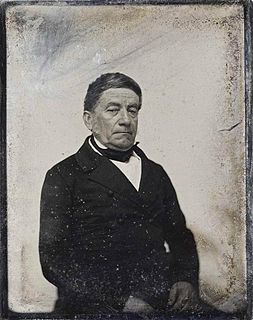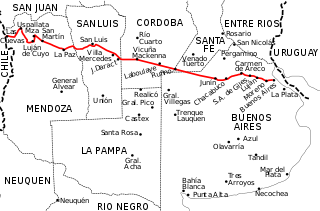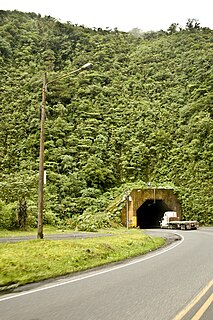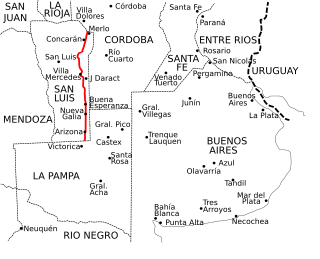The work
Before starting to implement the project, it was necessary to open side routes to reach fixed sites and to build a complex infrastructure in the mountains that included workshops for vehicle maintenance, equipment and machinery, generators and shelters for workers.
Road construction in the high peaks was slow, hard and difficult. To get into the mountains, cuts were made with explosives, bulldozers dug out the material and large-sized trucks moved it to where it was needed. The fine work was done with hand hammers.
It was very hard work because the track was made through very rugged mountain topography with numerous narrow ravines. These streams are located in the provincial water reserve Pampa de Achala, the source of many streams, permanent and semi-permanent, of low flow, tributaries of the rivers Condoritos, De la Sole, San Bernardo, Nono and Mina Clavero.
The road runs along a geological area which is dominated by sedimentary rocks and decomposing granite with little vegetation. The amount of rock moved was of the order of 2,100,000 cubic metres and 1,100 tons of explosives were used to break the mountainside.
The first part tackled was the west slopes of the Massif de Achala, a section between Paula and Nina Stone Turtle, 11 kilometres roadway length and 10 metres wide. In 1968 this section was completed and the following year another 11 km was begun, between Mina Clavero and Nina Paula, with a 20-metre carriageway.
In April 1972 the Stone Turtle to the Condor section, 32 kilometres, was built. Between 1977 and 1979, the section between Condor and the Pampilla was constructed and in 1979-198, they skipped a stretch, working between Post and Post Pedernera Bustos. Between 1983 and 1987, the Pedernera Post to the Pampilla section was completed, 8.6 km in length with a carriageway width of 19.5 metres.
Throughout this period the old suspension bridges road continued to be used and the town of Copina was the main supply center and shelter.
At first the route was not paved so as to allow the ground to settle and stabilize the natural material. In 1987 it was decided to pave all the stages to reduce future maintenance costs and provide safety to motorists and trucks that were using this new route.
Then it would be done the leg stand Bustos - Bosque and Bosque Alegre Alegre - Falda del Carmen. In 1993 he inaugurated the first full paving and Governor Ramon Mestre opened the stretch Bosque Alegre - Villa Carlos Paz.
Under an agreement between the province of Cordoba and the national government, provided for the transfer of certain routes, touching the new road of approximately 126 km, be converted into a section of the National Route 20 (Argentina).
For finalizing the Way of the high peaks, with the trace and the slopes required for heavy truck traffic and vehicle load, it is necessary to complete the last stage, which will connect with Highway Bosque Alegre Justiniano Allende Posse, linking the cities of Córdoba and Villa Carlos Paz.

The Rally Argentina is an Argentine rally competition that has been a round of the World Rally Championship, the Intercontinental Rally Challenge, the South American Rally Championship and the Argentine Rally Championship. It is held in the area around Villa Carlos Paz in Córdoba Province, on narrow gravel roads best known for their water-splashes.

Brigadier General José María Paz y Haedo was an Argentine military figure, notable in the Argentine War of Independence and the Argentine Civil War.

National Route 9 is a major road in Argentina, which runs from the center-east to the northwest of the country, crossing the provinces of Buenos Aires, Santa Fe, Córdoba, Santiago del Estero, Tucumán, Salta and Jujuy. It starts on Avenida General Paz, which marks the border between the Autonomous City of Buenos Aires and the surrounding province of the same name, and ends at the Horacio Guzmán International Bridge, on the La Quiaca River, traversing 1,967 km (1,222 mi). The road is a limited access motorway from Buenos Aires to Rosario.

National Route 7 is a road in Argentina. It crosses the country from east to west, from the capital to the border with Chile, thus linking the Atlantic coast with the Andes, crossing the provinces of Buenos Aires, Santa Fe, Córdoba, San Luis and Mendoza. It has a total length of 1,224 km (761 mi), of which 367 km (228 mi) (30%) are freeways.
Jorge Raúl Recalde was an Argentine rally driver born in Mina Clavero.
The Arequito revolt, was a military revolt by officers of the Army of the North through which they recused themselves from the fight in the civil war against the federales. Their intention was to return to the front of the war against the royalists in Upper Peru, an objective that they could not ultimately meet. It signified the beginning of the disintegration of the Supreme Directorship and was one of the main causes of the centralist defeat at the Battle of Cepeda.
Under UNESCO’s Man and the Biosphere Programme, there are 125 biosphere reserves recognized as part of the World Network of Biosphere Reserves in Latin America and the Caribbean. These are distributed across 21 countries in the region.

Pampa de Achala is the name given to a vast region that lies at the heart of the Sierras de Córdoba located within Sierras Pampeanas, and located in central-northwest of Argentina. It is a rugged area with little vegetation, lying over 1,500 m above sea level, and which has distinctive species, ecology, relief and hydrography. The region is protected by provincial law, and that this region basin is head of the vast majority of streams that run through the Córdoba.

Quebrada del Condorito National Park is a federal protected area in Córdoba Province, Argentina. Established on 28 November 1996, it houses a representative sample of the Sierras Pampeanas biodiversity in endangered state of conservation. It has an area of 37,344 ha

The Sierras Pampeanas is a geographical region of Argentina.
The Hang Suspension Bridges Road is the ancient route linking the Valley Traslasierra with the city of Villa Carlos Paz in the Córdoba Province, Argentina. Its outstanding feature, which gives it its name, is the existence of several suspension bridges erected across mountain streams.

BR-040 is a federal highway of Brazil. The 1,139.3 kilometres (707.9 mi) road connects Brasilia to Rio de Janeiro.

Córdoba is a province of Argentina, located in the center of the country. Its neighboring provinces are Santiago del Estero, Santa Fe, Buenos Aires, La Pampa, San Luis, La Rioja, and Catamarca. Together with Santa Fe and Entre Ríos, the province is part of the economic and political association known as the Center Region.

Mina Clavero is a municipality in San Alberto Department in Córdoba Province, Argentina. It forms the municipality of same name and is the tourist center of Traslasierra valley. It is characterized by its natural landscapes, beaches and nightlife.

Traslasierra Valley is a natural geographic region of the province of Córdoba, Argentina, located west of the Sierras Grandes and east of the Sierras Occidentales. The tourist capital is the city of Mina Clavero and the most important commercial center is the city of Villa Dolores.

National Primary Route 32, or just Route 32 is a National Road Route of Costa Rica, located in the San José, Heredia, Limón provinces. It connects the central valley and Greater Metropolitan Area to the Caribbean coast of the country.
Pleurodema cordobae is a species of frog in the family Leptodactylidae. It is endemic to the Sierras de Córdoba of Argentina. This endemic species also resides with the highly similar species, Pleurodema kriegi. P. cordobae exhibits particular characteristics that differentiate it from other frogs in the Pleurodema genus, including the fact that the species is octoploid, as compared to the P. kriegi and Pleurodema bibroni, which are tetraploid. P. cordobae inhabits temporary and semi-permanent ponds. As this species is only found in isolated locations such as the Sierra Grande, little is known about its very limited population.

Provincial Route 55 is a 458 km (285 mi) long paved highway that runs through San Luis Province, from north to south at the eastern end, near the border with the provinces of Córdoba and La Pampa.

Avenida Leopoldo Lugones, and its southern continuation, Autopista Dr. Arturo Umberto Illia, is a freeway running from Avenida General Paz in the north, which continues to an interchange with National Route 9 and the Paseo del Bajo in the city center. It provides access to Downtown Buenos Aires from the northern suburbs, and from Rosario, Cordoba, and other northern destinations. Due to the lack of a complete bypass of the city, it also connects truck and bus traffic from La Plata to the north. It runs along the east shore of the city, providing access to Aeroparque Jorge Newbery.













